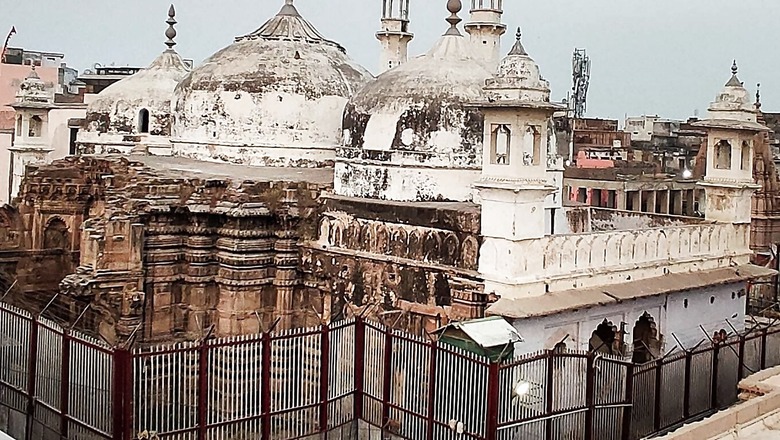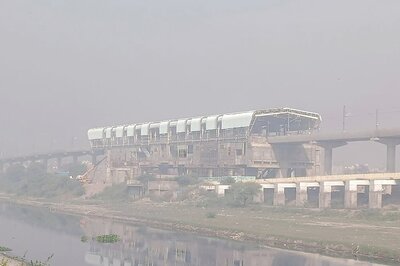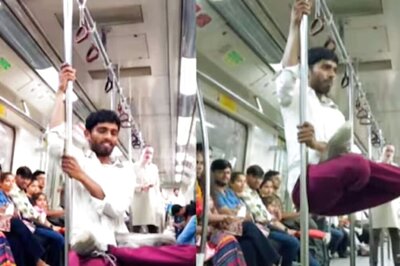
views
The Gyanvapi Mosque survey concluded with an extraordinary finding — the claim of a 12-foot-long Shivling found on the site, perhaps the one that the Nandi on the opposite side had been patiently waiting for. Whether this is indeed the shivling from the temple will need to be verified, but there is little dispute about the fact the mosque rests, very visibly, on Hindu temple walls. The finding is likely to create at least three different reactions, one of a triumphant “I told you so” from the Hindu revivalist crowd, another of dismay and denial from the “secularists” who worry what it would mean for Hindu-Muslim relations, while the third, from Asaduddin Owaisi of the Right-wing Muslim AIMIM with aggressive posturing that the “Gyanvapi Masjid” would “stay till Qayamat”. Among these discordant voices, what is the way forward for reconciliation?
Firstly, there can be no reconciliation without truth. When one creates “secular” fictions to paper over reality in an attempt towards harmony, this ultimately fails because the truth has a way of coming out. For decades, the secular Left dispensation has tried to hide or spin away the reality of Islamic iconoclasm in India, first by denying it happened, then denying its religious motivations, then arguing “everyone did it” including Hindus. Many arguments were used to obscure and spin away the existence of a prior temple in Ayodhya, despite ample evidence — which after long delays was finally upheld in Court.
But it didn’t need to be that way. If we start with the simple truth. Islamic invaders destroyed thousands of temples in India. This comes from a theology of iconoclasm which is fundamental to the two world-dominating monotheisms — Christianity and Islam. The gods of monotheism brook no opposition. Jehovah, the god of the Bible, commands:
“Thou shalt have no other gods before me. Thou shalt not make unto thee any graven image… Thou shalt not bow down thyself to them, nor serve them: for I the Lord thy God am a jealous God.” Exodus 20:3-5
Similarly, Allah, the god of Islam, considers that having “rivals” of Allah, or associating others with Allah, is the “greatest sin”, greater than rape or murder or genocide. Thus breaking “stone idols” is an act of piety against this greatest of sin.
Due to these theologies, we see the systematic destruction of sacred places of others across the world. All of South America is dotted with churches built after destroying sacred indigenous temples. The museum in Istanbul proudly displays a list of mosques that were built on destroyed churches, or churches converted to mosques. Similarly after Spain expelled an Islamic occupation in the Reconquista, all the mosques were destroyed or changed into churches. This is the history of the two monotheisms across the world. And it stands to reason. It comes from their belief that the “other” is evil, and what they worship is “Satanic”. With such a belief it would be natural to destroy others’ temples.
ALSO READ | Opinion | Gyanvapi: Fading Minorityism in India and Zealots’ Last Stand
Indic traditions — Hinduism, Buddhism, Jainism, Sikhism — do not share such beliefs. So, despite the spin of the Left historians, occasional episodes of mutual temple destruction were largely fueled by local political factors, and were thus much rarer. The ancient capital of Ayutthaya, in Thailand, has smashed idols of Buddha, an act carried out by an invading army from Burma, which was also Buddhist. Because such destruction was not fueled by a theology of iconoclasm, unlike that of Christianity and Islam, such destruction was sporadic.
Recognising this fact allows us to move forward with greater understanding rather than denial. Yes, Islamic invaders and rulers destroyed a lot of temples in India. Christians did too, in places like Goa. This does not mean that present-day Muslims or Christians need to be “punished” for these acts of violence. Nonetheless, the least one can expect is truth and acknowledgment. And this is where the problem has been.
As K.K. Muhammed, former ASI regional head said:
“The Babri issue would have been settled long ago if the Muslim intelligentsia had not fallen prey to the brain washing by the Leftist historians…It was they who connived with the extremist Muslim groups to derail all attempts to find an amicable solution to the Masjid issue.”
The Ram Janmabhoomi issue need not have lingered this long. Neither should the issue of the Kashi Vishwanath Mandir on which the Gyanvapi Mosque was built. There is ample evidence for this — the destruction of the Kashi Vishwanath temple is documented in Aurangzeb’s own court records, reproduced in the recent book Aurangzeb’s Iconoclasm, by Francois Gautier. Of the thousands of sites, Hindus have long asked for three most important ones — Ayodhya, Kashi and Mathura — to be returned to them. This is not a big demand, these places have huge significance to Hindus, and almost none to Muslims who’d be giving them up for alternate mosque sites. If done graciously, it would go a long way towards communal harmony in India.
But their return faces two major obstacles. Fundamentalist Islamic leaders like Owaisi who see any reconciliation as “showing weakness” for triumphalist Islam. And even worse, the “seculars”, who add fuel to the fire by denial and demonisation of those whose sacred sites were destroyed by invaders, which causes an upsurge in Hindu anger and reaction.
Countries around the world are recognising indigenous rights and restoring places and names. Mount McKinley in Alaska was recently reverted to the native name Denali. In India there is a great opportunity for truly Indic Muslim leaders to be platformed who show the way towards reconciliation through acknowledgment and restoration vs the demagoguery of the Owaisis. But for that the secular-Left must first stop denial and prevarication. From truth shall arise reconciliation. And only with reconciliation can communal harmony arise.
ALSO READ | Why Indians Should Be Allowed to Question the ‘Great Muslim Conqueror’ Theory of History
Sankrant Sanu is the author of the book ‘English Medium Myth’ and the founder of Garuda Prakashan. The views expressed in this article are those of the author and do not represent the stand of this publication.
Read all the Latest Opinions here



















Comments
0 comment